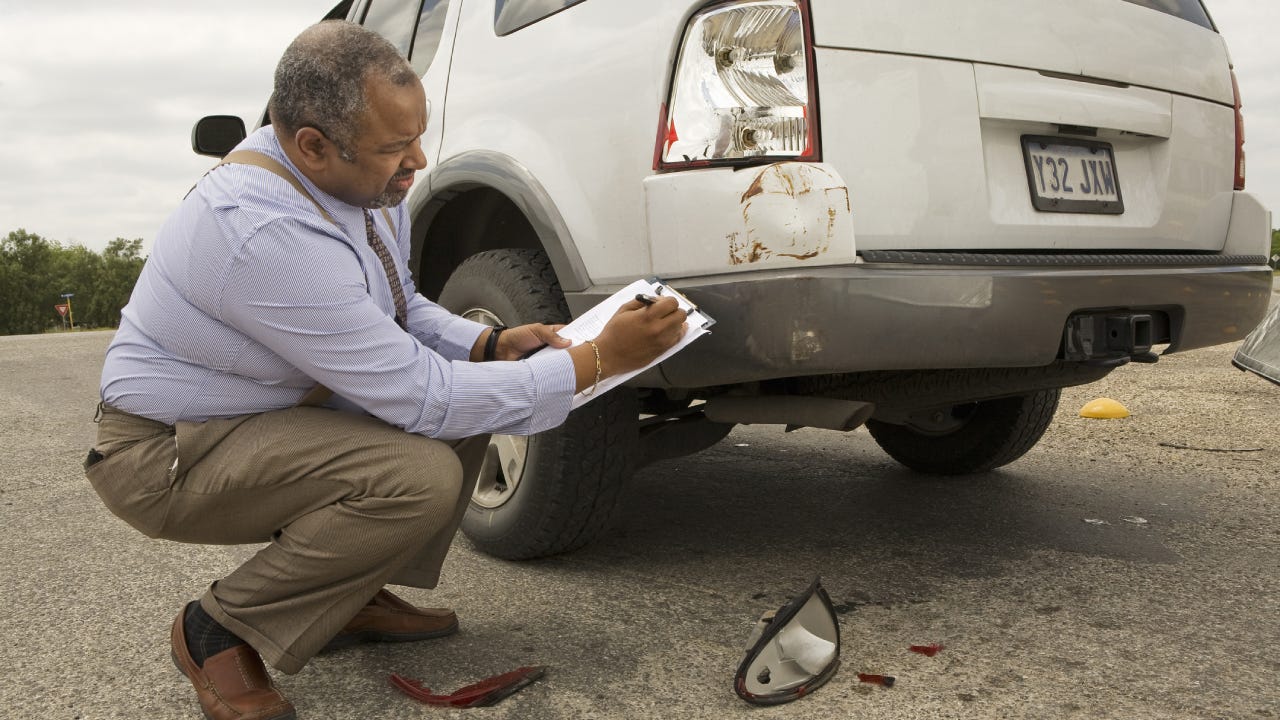Comprehensive car insurance coverage

Key takeaways
- Full coverage car insurance coverage typically refers to a policy that includes state-mandated coverage types, plus comprehensive and collision insurance.
- Your state will not require you to have comprehensive insurance — but your lender may.
- Comprehensive coverage provides financial protection for your vehicle against many perils such as theft, weather, hitting an animal and falling objects.
- Although comprehensive coverage usually pays for damage to windows or windshields, your insurance provider might allow you to pay a separate glass deductible instead.
If you’ve ever read through a full coverage insurance policy, you’ve probably seen comprehensive and collision listed as coverage types. Unlike minimum insurance coverage, which is likely required by your state and includes liability insurance for damage you cause to others, collision and comprehensive car insurance each cover certain types of damage to your own vehicle. This is why some lenders require drivers to carry full coverage car insurance. While collision insurance covers damage to your car caused by colliding with something, comprehensive insurance covers vehicle damage caused by other perils like flooding, theft, vandalism, hitting an animal and other weather-related events. If you’re unsure whether or not you need this type of insurance, our guide to comprehensive coverage might help you decide.
What is comprehensive insurance?
When shopping for car insurance, most people do not think about their car being damaged by anything except another car. However, many claims are made because a vehicle was damaged by a non-collision event, like a flood, vandalism or hailstorm. This is where comprehensive insurance comes in.
Comprehensive insurance is one supplemental coverage that you can add to your policy in order to financially protect yourself against certain types of damage to your car. Comprehensive doesn’t cover collision with another vehicle or object, but it does pay to repair or replace your vehicle if it’s damaged in a covered non-collision event. Basically, comprehensive insurance fills in the gaps left by liability and collision coverage.
Purchasing both comprehensive and collision insurance is what most insurance providers mean by the term ‘full coverage car insurance.’
What does comprehensive insurance cover?
First, it’s essential to understand the difference between comprehensive vs. collision. Hitting a stationary object or a pothole falls under collision coverage. Additionally, collision applies to your vehicle’s damage if you hit another vehicle or rollover in a single car accident.
But there are many non-collision situations where your car might become damaged or totaled. If you’re hoping to have insurance cover the repairs or replacement in those situations, you might want to consider purchasing comprehensive insurance, which provides extensive coverage after you pay your deductible. Here are a few of the instances that are typically covered and not covered through comprehensive insurance:
| Covered | Not covered | |
|---|---|---|
| Comprehensive insurance | Hitting an animal Theft Vandalism Riots Windshield and glass Fire Weather-related damage Falling objects Flooding |
At-fault accidents Hitting stationary objects Hitting potholes |
Since the list above accounts for many things that could damage or total your vehicle, most insurance experts advise purchasing a full coverage car insurance policy that includes comprehensive coverage. If your car is leased or financed, full coverage insurance may be required.
How much does comprehensive coverage cost?
If you’re looking for the most financial protection for your vehicle, full coverage car insurance that includes comprehensive coverage is often your best bet, but you’re probably wondering how much that will cost. The exact price you’ll pay depends on multiple personal factors, which insurance providers weigh differently. This is why it’s usually a good idea to request quotes from several providers before purchasing a policy.
To give you an idea of what you might pay for full coverage insurance, which includes comprehensive coverage, we looked at data compiled by Quadrant Information Services. As of June 2024, drivers in the U.S. pay an average of $2,311 per year for a policy that includes comprehensive insurance.
Insurance companies consider many different rating factors when calculating the cost of coverage, including:
- Driver’s age (in most states)
- Driver’s gender (in most states)
- Marital status (in most states)
- Driving experience (in years)
- Driving history
- Claims history
- Insurance discounts
- Type of car
- Age of car
- Car ownership status
- Annual mileage
- Credit-based insurance score (in most states)
- Vehicle (location)
- Insurance history
- Amount of coverage you need
The cost of comprehensive coverage also varies depending on your deductible or the costs you pay out of pocket in the event of a claim. Some standard deductibles include $250, $500 and $1,000, but more options may exist depending on your carrier. Generally, the higher your deductible, the lower your premium will be for that coverage.
Although choosing a higher deductible can result in a cheaper premium, a high deductible may cause financial hardship if you need to file a comprehensive claim. For this reason, many insurance professionals advise choosing the highest deductible you can reasonably afford.
Do I need comprehensive insurance?
It depends. Nearly every state has a minimum amount of coverage you must carry, but comprehensive coverage is not one of them. Even though states do not legally require this coverage, your finance or leasing company will usually require it. Since your lender technically owns your vehicle until it is paid off, it will want to protect its investment from damage.
Even if your vehicle is not financed, consider the following questions before dropping comprehensive from your policy:
- Is there a lot of wildlife in your area?
- Are forest fires a common occurrence at the moment where you live?
- What is the crime rate in your neighborhood?
- Do you get a lot of hail in your state?
- Do you live in a flood zone, according to the FEMA flood map?
- What is the depreciated value of my vehicle?
Even if comprehensive coverage isn’t required, you may consider including it if you live in a risky area for certain incidents. Floridians, for example, may find that the cost of comprehensive coverage is worth it because of the high probability of extreme weather events in their state. If you live in an area with high crime rates, for instance, you might rest assured knowing that your vehicle is covered against theft or vandalism.
Most insurance experts recommend that you should consider purchasing comprehensive coverage if you can afford it since it provides such broad protection. If you’re concerned about the additional cost, you might speak with your insurance representative and ask how much it will add to your premium. Don’t forget that raising the deductible can help you lower your premium for comprehensive coverage; just be sure that whatever deductible amount you choose is an amount you can afford to pay on short notice.
Frequently asked questions
You may also like

What is an insurance claim and when should you file one?

HO-5 insurance: what it covers and who might need it

Pets and renters insurance: Why you need it

Does car insurance cover your parked car?


